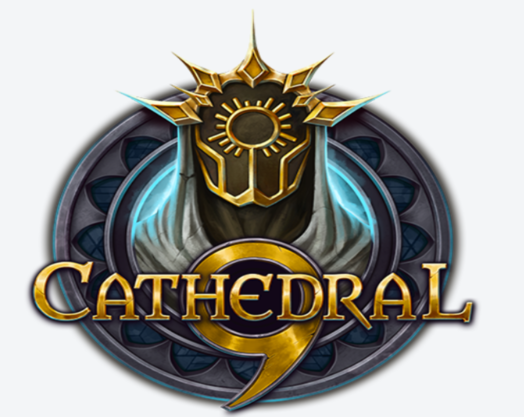Glossary Term
Top Pair
Top Pair
Used In: Poker
Introduction
Top pair is one of the most common and important hand categories in poker. It happens when you pair the highest card on the flop with one of your hole cards. For example, if the flop is K♦ 8♣ 3♠ and you hold a King in your hand, you have top pair. This hand is often strong but not always the best, so how you play it matters a lot.
Playing top pair requires balance. It can be a winning hand if you bet and protect it against draws or weaker pairs. But it can also get beaten by two pair, sets, or better hands. Skilled players use position, bet sizing, and reading opponents to decide whether to bet, call, raise, or fold when they have top pair. This hand often forms the basis for postflop decisions.
Top pair gives you a solid chance to win pots but also demands caution. You want to avoid overcommitting if the board looks dangerous or opponents show strength. Learning when top pair is good enough and when it isn’t is key to making smarter plays and avoiding costly mistakes in poker.
-
Top pair means pairing the highest card on the flop with one of your hole cards.
-
It’s usually a strong hand but can be vulnerable to better hands or draws.
-
Playing top pair well depends on position, bet sizing, and reading your opponents.
In Depth Look
Top pair is a fundamental hand that often forms the core of many postflop strategies. It gives you a solid starting point because you hold the highest-ranking card on the board paired with your hole card. However, top pair is rarely a guaranteed winner. Depending on the board texture and the number of opponents, it can be vulnerable to stronger hands like two pair, sets, straights, or flushes. This means you have to consider the board carefully and adjust your play. For example, if the flop is A♦ 9♠ 4♣ and you hold an Ace, you have top pair, but if the board shows coordinated cards that could create straights or flushes, you need to be cautious.
The way you play top pair also depends heavily on your position and the tendencies of your opponents. In early position, it’s often safer to play more cautiously, as many players act after you and could hold stronger hands. In late position, you have the advantage of seeing others’ actions before making your move, which helps you decide whether to bet, raise, or check. Bet sizing is key as well; betting too small can give free cards to opponents with drawing hands, while betting too large can commit you to a pot with a hand that might not hold up. Successful players use these factors to protect their top pair while minimizing losses in tougher situations.
Mechanics
Top pair forms when the highest card on the flop matches one of your hole cards. For example, if the flop is Q♠ 7♦ 2♣ and you hold a Queen, you have top pair. This hand usually has decent strength but isn’t a lock to win. How you play it depends on factors like the number of opponents, board texture, and your position.
Betting with top pair serves two main purposes: to build the pot when you likely have the best hand and to protect against drawing hands that could beat you later. The size of your bet matters. A bet that’s too small risks giving free cards to opponents chasing straights or flushes. A bet that’s too large can force folds from weaker hands but might also commit you too much if your hand isn’t very strong.
Your position relative to other players also affects your top pair play. Acting early means you must be cautious since several players act after you and could hold stronger hands. Acting last gives you valuable information before deciding how to bet or check. Adjusting your strategy with these mechanics in mind helps you get the most value from top pair while avoiding big losses.
| Mechanic | Description | Example |
|---|---|---|
| Forming Top Pair | Pair the highest card on the flop with a hole card | Flop: Q♠ 7♦ 2♣, You hold Q♦ |
| Bet Sizing | Choose bet size to build pot or protect hand | Bet 50-70% pot to protect vs. draws |
| Position | Adjust play based on when you act | Play cautiously early; aggressive late |


Illustrated Example
You’re playing a $1/$2 No-Limit Hold’em cash game and hold Q♦ 10♠ in the cutoff. The hijack raises to $6, and you call. The flop comes Q♠ 7♥ 3♦, giving you top pair with your Queen. The hijack bets $8 into the $13 pot, and you call to see how the hand develops. The turn is the 2♣, and the hijack checks.
Seeing an opportunity to protect your hand against possible draws, you bet $15. This bet puts pressure on your opponent, who folds, letting you win the pot without a showdown. In this example, top pair gave you a strong but cautious advantage, and careful betting helped you avoid losing chips to stronger hands or draws.
Player Perspective
Holding top pair often feels strong but requires careful judgment. You know you have a good chance to win, but you also understand that better hands or draws are possible. Your goal is to protect your hand while getting value from weaker holdings. This means deciding when to bet, call, or sometimes even fold, based on the board, your position, and your read on opponents.
Facing bets or raises while holding top pair can be challenging. You need to weigh whether your hand is likely still best or if you’re behind. Sometimes calling and seeing another card is the safest move. Other times, raising can push opponents out and take control. Good players stay flexible, adjusting their decisions to the situation rather than relying on top pair alone.
Conclusion
Top pair is a common and valuable hand in poker, but it requires thoughtful play. It offers a solid chance to win, yet can be vulnerable to stronger hands and draws. Successful players use position, bet sizing, and reading opponents to protect their top pair and maximize value. Learning when to be aggressive and when to be cautious with top pair is key to improving your overall poker game.
The Top Online Casinos for Playing Poker
These platforms prioritize player satisfaction by providing intuitive interfaces, seamless gameplay experiences, and robust security measures to ensure a fair and enjoyable environment for all users.


Author
Branimir Ivanov | Senior News Contributor








